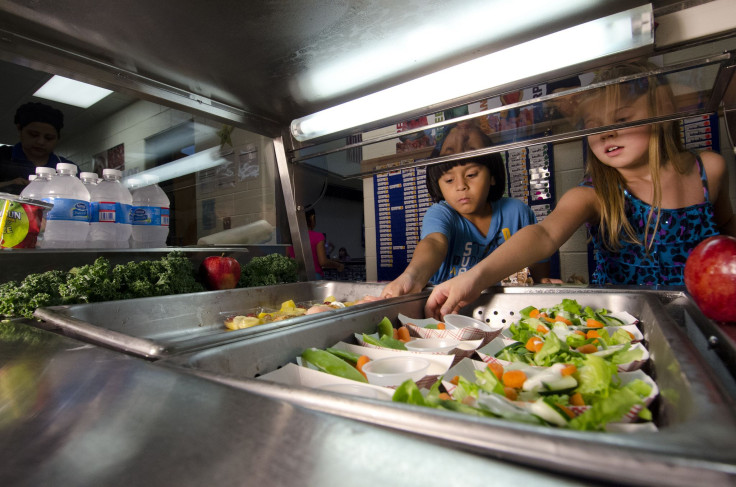Emoticons, Small Prizes Help Kids Make Healthy Food Choices In School

Healthy food choices can be difficult to make at any age — but they’re especially difficult when you’re eating in a school cafeteria. But could the solution be so simple as to serve this foods with an, ahem, smile? A new study to be presented at the Pediatric Academic Societies annual meeting in San Diego says yes.
The study consisted of two phases: The first placed green smiley face emotions by the most nutritious foods in a school cafeteria, including fruits, vegetables, plain milk, annd whole grain entrees. The second phase, which occurred three months after the first, introduced what’s called a “power plate:” a plate that’s filled with four healthy foods. Anyone who chose to eat a power plate received a small prize, from a sticker to mini beach ball. After both phases, cashiers used their receipts to measure differences in the purchase of healthy foods over the course of the study.
The results showed plain milk purchases increased 549 percent, rising from 7.4 percent of total sales to 48 percent total. Chocolate milk sales, on the other hand, decreased from 86.5 to 44.6 percent (though overall milk purchases were about the same from the start to finish of the study).
In addition to plain milk, fruit sales increased by 20 percent; vegetable sales increased by 62 percent; and the power plate selection increased 335 percent. This study suggests emoticons and small prizes give kids incentive to make healthier food choices.
"It looks like we found a very promising, low-cost and effective way of improving the nutrition of elementary school children," Dr. Robert Siegel, study author and medical director of the Center for Better Health and Nutrition of the Heart Institute at Cincinnati Children's Hospital Medical Center, said in a press release. "This type of program may be a useful component in schools trying to improve the nutrition and health of their students."
Siegel added poor food selection in school cafeterias is a risk factor for childhood obesity. In which case, his “two-tiered intervention” may be a way to reduce the growing rate of obesity, as well as improve the quality and selection of lunches offered to kids in school.
Source: Siegel R, et al. A Two-Tiered Cafeteria Intervention of Emoticons and Small Prizes Increases Plain Milk Purchase by Over 500%. Pediatric Academic Societies Annual Meeting. 2015.
Published by Medicaldaily.com



























